As an Amazon Associate I earn from qualifying purchases.
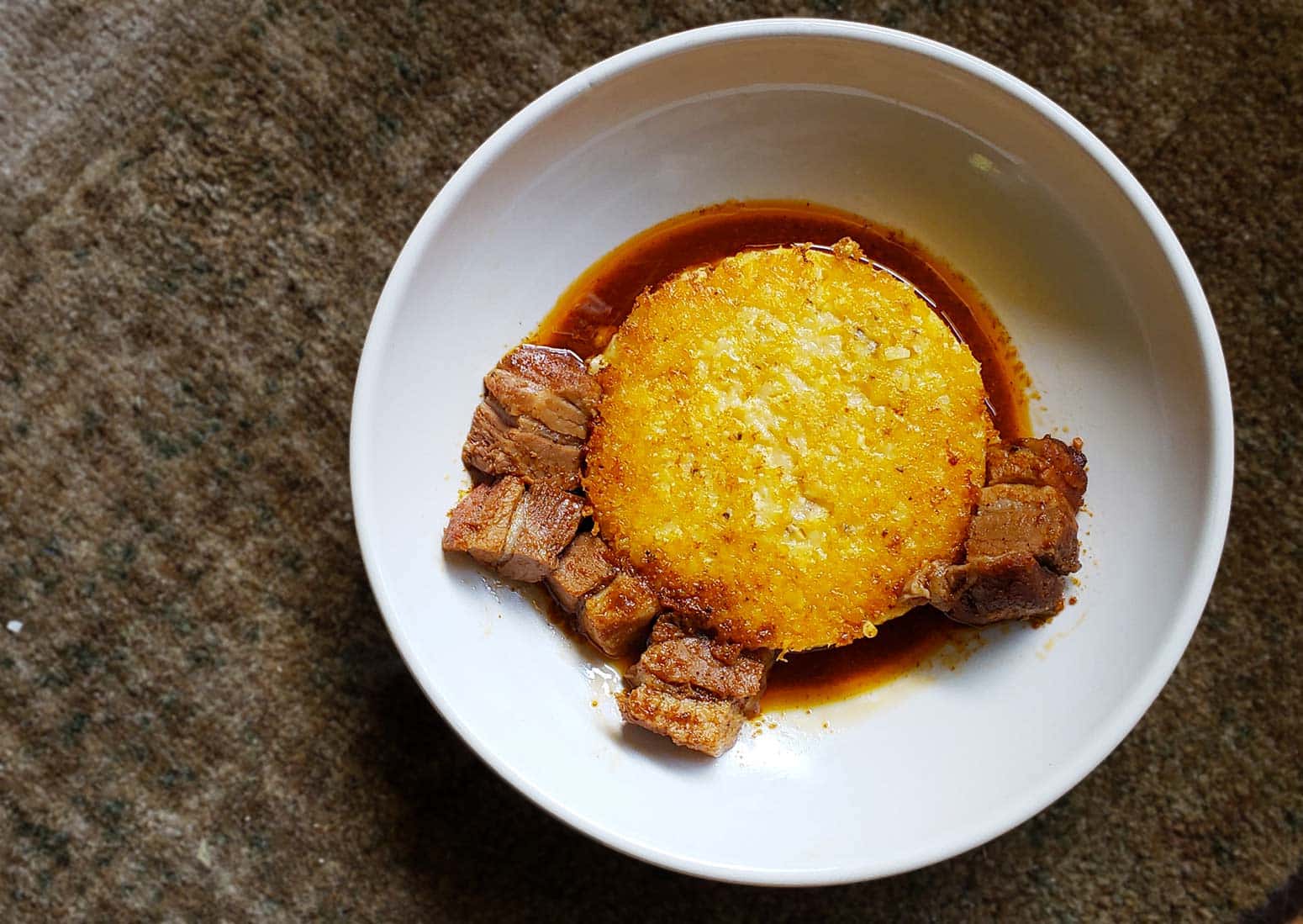
In these strange days, I find myself doing something I haven’t done in years: Meal planning. Yes, I know. For many, many of you reading this, meal planning is a way of life. But I don’t have kids, and I work from home, so dashing to the market on a moment’s notice has been my modus operandi for a decade.
No longer. We are only supposed to venture out once a week, at the most. This requires more thought. And that thought, taken to its appropriate conclusion, has led me to a more graceful, smarter way of cooking. It has led me towards the beauty of running a thrifty kitchen.
Let me show you what I’ve learned.
The core of it all boils down to Sunday, which I have made a Day of Cooking. Yes, I cook every day, often twice because Holly and I are at home and I can no longer really go out to lunch. This is key because lunches are where leftovers go to live their second life.
I suppose when I think about it, however, it really all starts on Saturday. Saturday is the day I plan, and the day I shop. We are still developing recipes for this site as usual, so we plan on working through one or two new dishes each week. If all goes well, I don’t have to remake them six times. All does not always go well. But hey, that is the price of running a test kitchen. I make the mistakes so you don’t have to.
How do I plan? I look at the weather — gloomy means stew, sunny means salad — the season, what vegetables are likely to be good right now, what herbs and vegetables I have ready in my garden (cilantro and a large-leafed variety of orache right now). Do I have any smoked meat or fish lying around? Which grains and beans should I cook this time? What should I haul out of the freezer? What did I make last week?
All that goes into the plan. It is surprisingly fun.
As a forager, hunter and angler, I have ample stores. Dried and pickled and salted and frozen things. In normal times, I am constantly replenishing them, adding new things from my various “Hanksperiments,” eating the fresh fish or game that I am normally spending lots of time procuring. Not now.
But now I get to survey my little realm and really let it shine.
The dishes Holly plans to photograph take top billing. In a non-food blogging household, these would be the highlight meals of the week. Sunday is always one of those meals. Every household, whether it is just you or a pile of humans, needs such a highlight. Or two. A standout dinner makes a a bad day bearable, a good day better.
Every cuisine has such meals. A roast haunch of meat in Britain, or really in many places, tamales in Mexico, a big spread of many delightful things in China or Spain or India.
These are all designed with the following week in mind. Leftover roast beef (or venison) sandwiches. Fried rice. Curry-of-whatever. Refried beans. And my favorite, the so-called “garbage plate.”
This is simply a mish-mosh of tasty things reheated in a frying pan, often started by sauteing an onion and bound with an egg or three. When I was growing up, we called it “Farm Fry.” Many know it as hash.
To make your own garbage plate, you need a leftover starch of some sort, like old rice, stale tortillas or bread, cooked potatoes. Stray bits of meat, often not enough for a real meal, are a good touch. Something very zippy, too, like the scraps of salsa or the last bit of pickle brine in a jar that has one remaining pickle. The pickle goes in, too. The aforementioned onion, maybe with a minced garlic clove to keep it company.
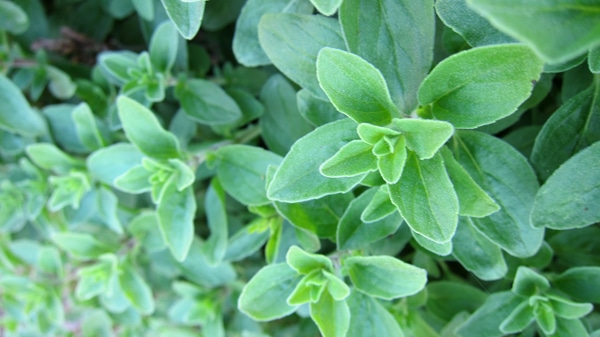
Fresh herbs are an ideal addition, whatever you have around — and if you have not started growing your own herbs, even in a windowsill or fire escape, you might want to start — but dried herbs will do. When I was a child and ate obscene amounts of canned chicken noodle soup, I would choose an “herb of the day” from the spice rack to change things up. It is the same principle.
Get everything all happy in the pan, then lightly beat a few eggs in a bowl… or not. You can simply crack them over the sizzling mass of goodness and have areas of wonder bound by white, and other areas of wonder bound by yolk. A healthy grind of black pepper and you are ready.
To be sure, the garbage plate is typically an end-of-week deal, when I want to use up all the bits and bobbles from the week before I shop again.
Earlier in the week I tend to go the route of “starch with leftover yummy thing.” So, normally I make enough of the night’s dinner for the two of us, but I was an Italian grandmother in a previous life so what I think is good for two is often more like good for three. And three is an odd number.
That leaves that one serving, lonesome. Well, that one serving, split two ways with a fresh batch of rice or fried leftover grits (polenta), pasta or reheated tortillas makes a fine lunch. Always I am adding a few sprigs of a fresh herb here, or a few pickled things, or I’ll squeeze that stray quarter of a lime that sits on the windowsill over the bowl. Little things.
Some other small ways to be thrifty and eat better:
- Reuse fat. Cook bacon or duck, then leave the fat in the pan for the next meal. Or the one after that.
- Save pickle juice. Use it to punch up otherwise boring meals. Or, better yet, brine chicken, rabbit, pheasant or quail in it before buttermilk frying.
- Tops and stems and peels of vegetables can all go into stock or soup. One of the finest, cleanest, most wonderful broths I’ve ever made was simply the peels of a dozen carrots (I needed that many for another dish) barely simmered in salty water for an hour. Onions skins add flavor and color to a broth, too. No parsley stem ever hits my compost.
- Cilantro stems are every bit as good as leaves, if not better. If you are doing something where your cilantro will be blended, use the stems. They have more flavor.
- Got bones? Make broth, or use them as the base for beans or greens. A ham bone, simmered an hour before beans or greens go in, makes both better.
- Stale bread? Grind them into breadcrumbs. Or cut them in squarish pieces, toast and make panzanella. Or just tear the bread up and make ribollita, Italian bread soup.
- Leftover rice? Fried rice. Duh. Oh, and there’s no law that says you can’t make “fried rice” with cold, leftover barley or wheat berries or wild rice or anything similar.
- If you have some aging soup or stew in the back of the fridge, use it as a starter for another batch, even if its not the same soup or stew. So long as they are vaguely complimentary, it’ll work.
- The dregs of a bottle of wine will keep for months if you recork the bottle. Use it in cooking. So what if it’s stale? Flat beer adds flavor to stews, too.
- Store cooked beans in their cooking liquid. They’ll keep for most of the week, and at the end of that, make refried beans.
- Flake leftover fish into a salad, or make fish cakes. Or even something fancier, like fish dip.
I could go on. But these are just a few useful ways to make life better, with less waste, in your own kitchen.
The Quarantine Chronicles

Edible Weeds: Eat Your Lawn
The best place to find edible wild plants might be no further than your own yard.
Read More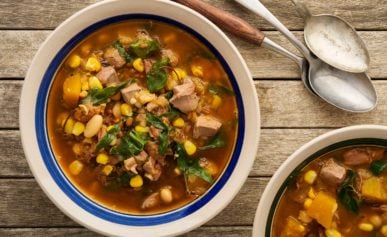
Making Stew with What You Have
Sometimes you have to make substitutions these days, and there is no better place to freestyle than in the stewpot. Here’s how to build a better stew.
Read More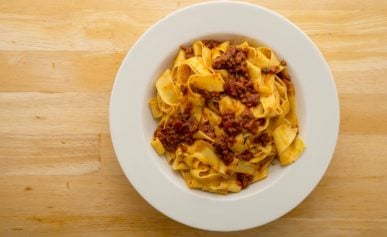
Black Mood, Red Sauce
It hasn’t all been sunshine and light these days. Our little family suffered a death recently, and its inevitability turned me inward, to that dish that gives me solace when all around me is black.
Read More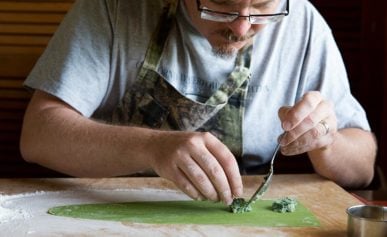
Stretching in Place
Quarantine has been a great opportunity to stretch yourself mentally, physically, and culinarily. Here are some ideas for you.
Read More
Time and Place on a Plate
When you can get out into the world again, do so with new eyes. Seeing what is around you when you hunt, fish or gather can inspire beauty on the plate.
Read More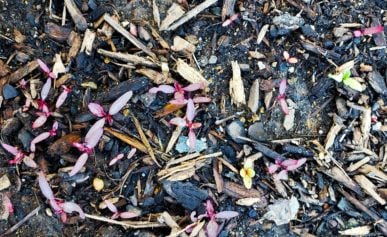
Support the Volunteers
In the garden, which for many of us is a place of solace these days, you will often find useful plants just growing, here and there. Consider supporting them.
Read More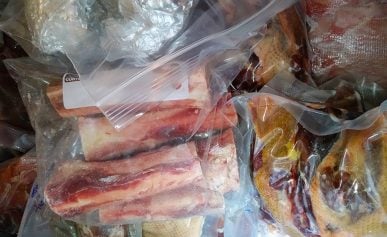
How to Salvage Freezer Burned Meat
When you can’t go to the store that often, you look into the depths of your freezer. Sometimes you don’t like what you see. Here’s how to deal with ancient frozen bits.
Read More
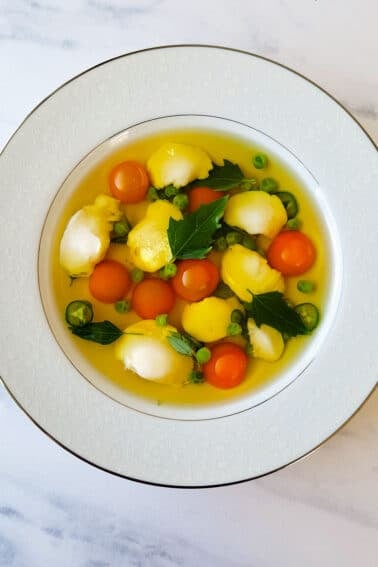
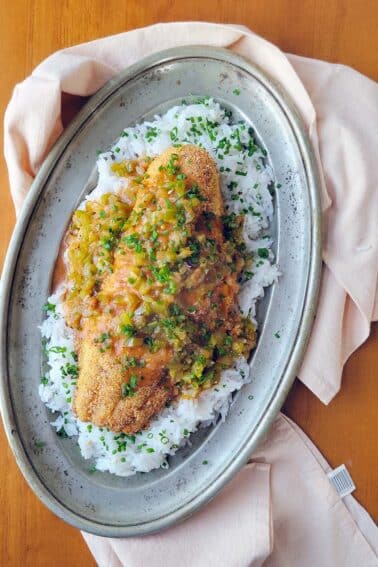
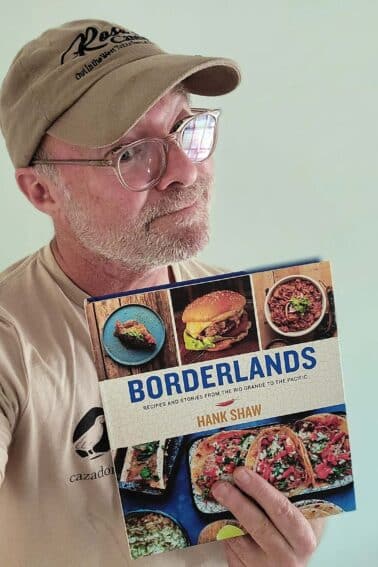
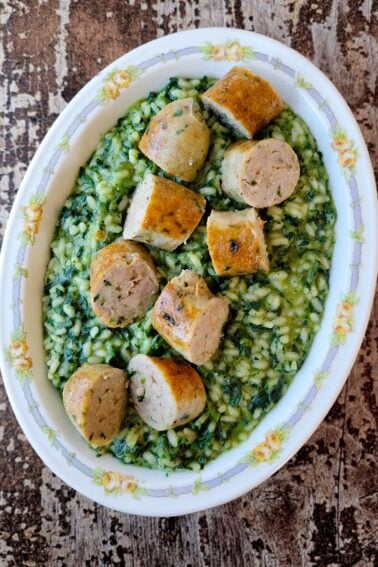
I’ve taken to double extracting my stocks, which are based in bones, dried mushrooms and the bag of veggie scraps from the freezer. After pouring off the first batch, I cover the solids with fresh water, simmer half an hour or so, strain, and when cool enough to handle, squeeze out all I can get a handful at a time. I find the second batch different than, but as good as the first.
When making tinctures/liqueurs, I often reuse the marc (solids) in food, like spiced quince leather, brandied nettles, etc.
I grow mushrooms at home, and make my own spawn for the process. Grain spawn (whole grains grown through with mycelium) are edible and are a unique ingredient – somewhere between grain and mushroom, and a reasonable sub for ground meat in some dishes. If you want to learn to do this yourself, you can check out my book, DIY Mushroom Cultivation, from New Society Publishers.
I’ve also made some (more or less) drinkable urban country wines with random sweet stuff, some water and a little champagne yeast – syrup from canned peaches, old unfinished (though not spoiled) jam, the clear liquid skimmed off a pot of stewed tomatoes, ginger tea, you name it!
The article was right in line with the way we’ve been cooking lately. Used 1/3 jar of dill pickle juice, 1/3 jar pickled hot jalapeño juice, 1/3 jar of water. Brought the mixture to a boil , added a pinch each of saffron & turmeric, threw in a handful of ramps, removed from the heat, covered & steeped in the liquid & then refrigerated! Not exactly your pickled ramp recipe or process but they’re still amazing & won’t last!
There’s such thing as leftover wine? Never heard of it …
I recently ran out of olive oil, so have gotten a little creative with the use of fat, both cold and for cooking. I made some ghee with butter I had left, and added the solids to a mish-mash of olive oil, lamb fat, et al I’ve used a times for frying. I also just had some bean dip with some tinned mackerel, and used the oil from the mackerel tin to pool around the dip. It will indeed soon be time to get more olive oil, but it gives me some internal pride to find these solutions that, as you say, eliminate waste.
Great post. I’ve always maintained the best cooks are the ones that can work with what’s on hand. Replacing this with that also leads to taste discoveries. One of my all time favourite lunches are leftover rice / quinoa / couscous whatever with leftover salad and dressing, fermented veg juice or kimchi.
Great article Hank. We’ll all be better off if food is not wasted. Love the idea of the used pickle juice as I am always making pickles. Keep up the great work.
Great post and very timely as well. We already save any pickle-type brines in our house, and I’ve long been the designated leftover attacker. Plus, just last weekend I made your delicious Venison With Spring Vegetables from “Buck, Buck Moose,” and since we had a couple large Yukon Gold spuds in the pantry, I cut them up and roasted them with baby red potatoes I specially bought for the dinner. It was more than we needed for our Friday dinner, but the extra spuds found their way into a venison breakfast sausage hash for Sunday morning. Now, of course, I’m re-thinking our compost habits, and may need to fight my partner to save scraps for a stock.
My dad was the king of left over meals. I can say we only got sick once. Being the dad of 2 teenage daughters, they don’t like leftovers. Tonight we’re having left over potlach salmon, I love it.